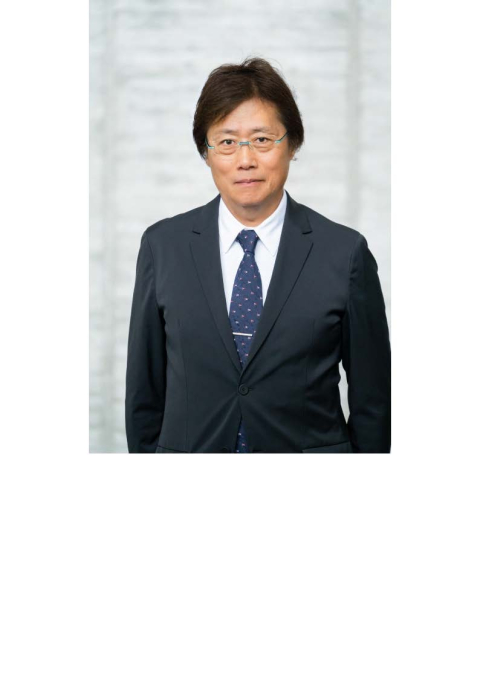McGill Seminar: Chihaya Adachi- Comprehensive molecular design aimed at high-performance Optoelectronic devices

Abstract:
Through the extensive R&D of organic light-emitting diodes (OLEDs) for more than 30 years, plenty of well-elaborated novel organic optoelectronic materials and device architectures have been extensively developed, resulting in the unique commercial utilization of OLEDs for cutting-edge smartphones, large-area TVs, and further new future display applications by taking advantage of light-weight and flexibility. From the aspect of materials science, the creation of novel light-emitting materials in OLEDs has been the central issue aimed at high electroluminescence quantum efficiency (EQE). Starting from the development of conventional fluorescence materials (1st generation) during 1990-2000th, the room-temperature phosphorescence (2000-) (2nd generation) and thermally activated delayed fluorescence (TADF) (2012-) (3rd generation) continuously pioneered the novel possibilities of organic emitters, resulted in not only high-performance OLEDs but also enriched organic photochemistry1). Recently, there has been a wide variety of studies on TADF-OLEDs because of the unlimited possibilities of TADF molecular design. Further, hyperfluorescence (HF)-OLEDs have been developed since they can realize the compatibility of high efficiency and narrow spectral width, which is ideal for practical display applications. Here, we report our recent cutting-edge HP-OLEDs demonstrating high OLED performance by optimizing host, TADF, and terminal emitter (TE) molecules along with the disclosure of unique exciton processes3-4). In particular, we focus on the blue-emission, which can show narrow FWHM and high EL quantum yield. Blue HF-OLEDs based on two new TEs are fabricated, resulting in high external quantum efficiency (EQE) of over 20%, high color purity, and high brightness. By analyzing the transient PL characteristics of the HP-OLEDs, we found the presence of efficient FRET between TADF-assistant dopant (TADF-AD) and TE molecules. Further, transient EL analysis confirmed that a smaller EHOMO difference between TADF-AD and TE efficiently helps to decrease hole trapping inside the emitting layer, hence resulting in a lower efficiency rolloff and a longer operational device lifetime. In addition, we point out that spontaneous orientation polarization (SOP) in organic thin films is the key issue to escaping exciton quenching processes. This report provides a designing principle for a TADF and TE in HF-OLEDs with well-matched energy levels, leading to efficient FRET and no significant carrier trapping.
In this presentation, we conclusively mention the importance of the charge transfer (CT) phenomenon in designing high-performance organic light-emitting molecules in OLEDs. Also, CT issues are crucial in maximizing the device's operation. Further, we look at the prospect of advanced CT technologies5-6).
References:
[1] T. Uoyama, et al., Nature, 492, 234 (2012)
[2] C.-Y. Chan et al., Nature Photonics, 15, 203 (2021)
[3] Y.-T. Lee et al., Advanced Electronic Materials, 7, 2001090 (2021)
[4] M. Tanaka et al., ACS Applied Materials & Interfaces, 12, 50668 (2020)
[5] R. Kabe and C. Adachi, Nature, 550, 384 (2017)
[6] A. S. D. Sandanayaka, et al., App. Phys. Express, 12, 061010 (2019)
Bio:
Prof. Chihaya Adachi obtained his doctorate in Materials Science and Technology in 1991 from Kyushu University. He held positions as a research chemist and physicist in the Chemical Products R&D Center at Ricoh Co., a research associate at Shinshu University, a research staff at Princeton University, and an associate professor and professor at Chitose Institute of Science and Technology. In 2005, he returned to Kyushu University as a professor and was promoted to a distinguished professor in 2010, and his current posts also include director of Kyushu University’s Center for Organic Photonics and Electronics Research (OPERA) since 2010 and director of the Fukuoka i3 Center for Organic Photonics and Electronics Research since 2013. His research has been concentrated on organic synthesis, device fabrication, and optical and electrical device characterization of organic semiconductors. He has been serving as an editor of “Organic Electronics” (Elsevier) (2007-2019) and CCS Chemistry (2019-). His publications include over 670 research papers. He won Nishina Memorial Award (2017), Nagoya Silver Medal (2019), etc., and was selected as a highly cited researcher (Clarivate) (2018-2023) and Medal with Purple Ribbon (2023).
Please see the following link to visit the QCAM Website